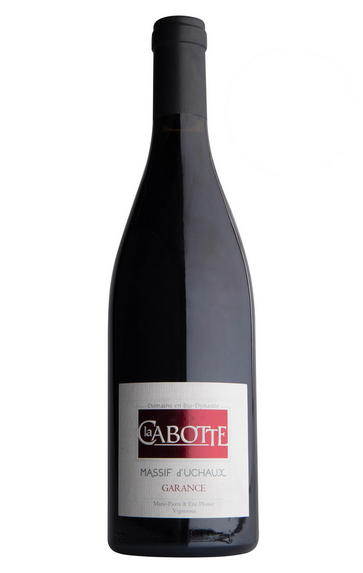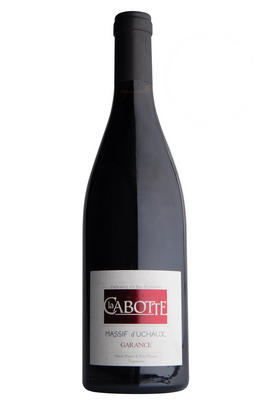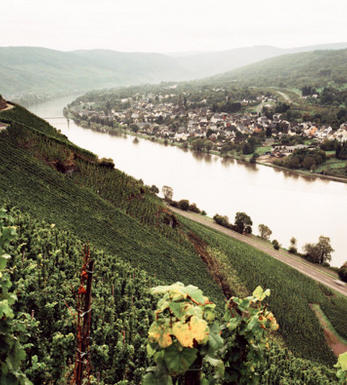
2022 Côtes du Rhône Villages, Massif d'Uchaux Garance, Domaine la Cabotte

About this WINE

Domaine la Cabotte
Purchased in 1981 and owned by the Plumet family ever since, the domaine has grown from 10 to 30 hectares of vines, with an additional 12 hectares coming on-stream this year, and 1.5 hectares in Châteauneuf-du-Pape. It is certified organic and farmed biodynamically. The mainly limestone and sand soils of the plateau of the Massif d’Uchaux are very poor in nutrients. This enables them to produce wines of real finesse and elegance in comparison to those from neighbouring appellations. Eric and Marie-Pierre Plumet believe that managing the environment around the vineyard is essential for a site’s health – from maintaining their 15 hectares of forest, to regulating water and the influence of wind, to promoting biodiversity. Son Etienne has been part of the team here for the past few years and is taking biodynamic innovations forward with his parents. Across the board, their wines are pure, mineral and fine.
The 2021 vintage was just as challenging for this domaine as it was for their neighbours, however, here Etienne talks of how their biodynamic approach saved them. He states that, after spraying vines that were 40% frosted with a valerian tea-infusion, the grapes recovered, leaving only 5% final damage. The freshness of 2021 is hugely complementary to Cabotte’s beautiful purity of style. These are wines with great ageing potential, especially La Sauvageonne. Etienne recently tasted a vertical of this wine from the last decade and each one was fresh as a daisy. The Colline Blanc is from the warmer and more fruit-forward 2022 vintage which Eric and Marie-Pierre describe as “one beautiful vintage in the making”.

Côtes du Rhône Villages
A clear step up from basic Côtes du Rhône in terms of both quality and price, the Côtes du Rhône Villages appellation covers an area of 5,700 hectares entirely within the Southern Rhône. About 15 percent of the size of its generic counterpart, it offers mostly excellent, very good value wines from all three hues that are more serious, concentrated and interesting.
Red wines dominate, made up of a minimum 50 percent Grenache, at least 20 percent Syrah and Mourvèdre, and no more than 20 percent from 10 other named varieties. Out of 95 communes that are eligible to use the Villages name, the finest 18 of them have the right to append their village name, as long as the wine is exclusively from that commune. The classification is quite fluid though, with Gigondas, Vacqueyras, and Beaumes de Venise and Vinsobres and Rasteau having been upgraded to AOC status, and other villages like Massif d’Uchaux and Plan de Dieu being added.
Best enjoyed from two to 10 years of age, the best wines probably come from Cairanne and Sablet, but all are well worth a look. The whites are rapidly improving and are delicious in their first three years. Rosé wines are made from the same cépage as the reds and are usually very good.
Recommended Producers: Chapoton, Domaine Cros de la Mûre, La Soumade

Grenache/Garnacha
Grenache (Noir) is widely grown and comes in a variety of styles. Believed to originate in Spain, it was, in the late 20th century, the most widely planted black grape variety in the world. Today it hovers around seventh in the pecking order. It tends to produce very fruity, rich wines that can range quite widely in their level of tannin.
In many regions – most famously the Southern Rhône, where it complements Syrah and Mourvèdre, among other grapes – it adds backbone and colour to blends, but some of the most notable Châteauneuf du Pape producers (such as Château Rayas) make 100 percent Grenache wines. The grape is a component in many wines of the Languedoc (where you’ll also find its lighter-coloured forms, Grenache Gris and Blanc) and is responsible for much southern French rosé – taking the lead in most Provence styles.
Found all over Spain as Garnacha Tinta (spelt Garnaxa in Catalonia), the grape variety is increasingly detailed on wine labels there. Along with Tempranillo, it forms the majority of the blend for Rioja’s reds and has been adopted widely in Navarra, where it produces lighter styles of red and rosado (rosé). It can also be found operating under a pseudonym, Cannonau, in Sardinia.
Beyond Europe, Grenache is widely planted in California and Australia, largely thanks to its ability to operate in high temperatures and without much water. Particularly in the Barossa Valley, there are some extraordinary dry-farmed bush vines, some of which are centuries old and produce wines of startling intensity.


Buying options
Add to wishlist
Description
This might be a classic Grenache, Mourvèdre, Syrah blend but it really is a step ahead of the competition at this price. Layered aromas of bramble fruit and wet stone combine with a just-rained-on pavement freshness. The palate is juicy with fresh raspberries and grainy blackberry seeds whilst a wonderful mineral purity lingers on and on. This is very impressive.
Drink 2024 - 2032
Berry Bros. & Rudd
wine at a glance
Delivery and quality guarantee